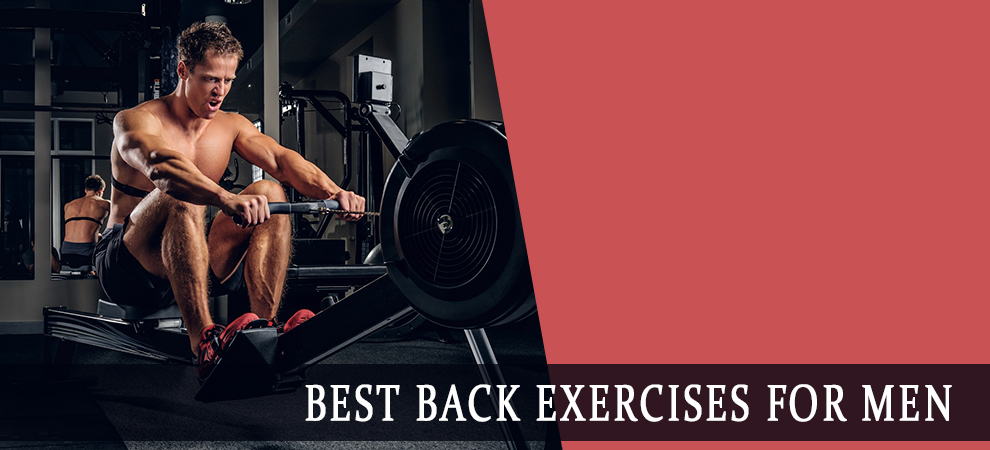Your back. It’s perhaps the hardest working group of muscles in your entire body, but is also often something that is overlooked – until something goes wrong, and then it can completely dominate your life.
From backache to muscle strain, having a bad back can put an instant halt on life. It is therefore important to keep your back fit, strong and healthy.
A healthy back is crucial to great posture, good mobility, overall strength, and an attractive physique.
In this complete guide to the best back workouts for men, we explore the back in more detail. We start by looking at why the back is so important, before taking a tour of all the different muscles that make up the back.
We also dive into the difference between building strength and muscle, before revealing the best back workout you can do to strengthen the muscles of your back, prevent injury, and build a more aesthetically pleasing back.
Let’s get started!
Table of Contents
Why is Your Back the King of Your Upper Body?

Aside from the legs, which many people fail to exercise, the back is perhaps the most often-neglected group of muscles in your body. Certainly in your upper body.
After all, if you can’t see it, why do you need to train it? You can just train your chest more or do a few more bicep curls… right?
Wrong!
Your back is of huge importance to both your athletic goals as well as your daily life. Let’s break it down.
In short, your back:
Connects major muscles
While the back itself contains major muscles (see below), it also acts as a conjunction between other major muscle groups of the body, such as your arms, legs and shoulders. A healthy back will help ensure other areas of your body remain healthy too.
Gives your body shape
Have you noticed that every good bodybuilder or physique model has a strong V shape? That is largely thanks to a well-developed back. A larger back will help create a slimmer waistline and completes the attractive look that many men desire.
Maintains good posture
One of the perils of 21st century living is that, for the majority of our time, we are sitting or hunched over, whether at a desk all day or looking at a smartphone. Having strong and healthy back muscles will help counteract all that hunching and encourage a better posture.
Helps other movements
Want to build a bigger bench press or a mammoth squat? Then strengthen your back, which proves crucial in these movements.
Your back supports your body on the bench while you bench press, which is why having a bigger and stronger back will translate to lifting more weight on this press.
The same goes for the squat – if you want to back squat 300lbs, you’d better have a strong back to support the loaded barbell. Meanwhile, a strong lower back will help support you during abdominal exercises, so don’t neglect your back if you want a six-pack!
Keeps you out of the chiropractors!
Perhaps the most important point here: maintaining a strong back with a good back workout will help you avoid various degrees of back pain that plague so many people, especially as we grow older. It just makes sense.

Introducing The Back Muscles
Now that we know the importance of a strong and healthy back, it’s time to take a closer look at what exactly the back is.
As you may have twigged, the back is actually a muscle group working together in harmony:
Lats
Even those unfamiliar with the anatomy of the back are likely to have heard of the ‘lats’ (latissimus dorsi), as they are one of the biggest and most recognizable muscles in your upper body.
Spanning both sides of your torso, this large pair of back muscles has the prime task of helping to move your arms and shoulders.
Building these muscles also helps give the appearance of a bigger back visible from the front of the body, so they are crucial for aesthetic goals.
Traps
The traps (trapezius) are another well-known muscle in the back, largely because they give your back thickness.
Sitting in the center of your upper back, the traps are attached to the base of your neck and extend out to your shoulders and down to the middle of your spine, creating a trapezoid shape (hence the name).
The traps are tasked with moving your head, neck, arms, and torso, and to pull your shoulders both up and down.
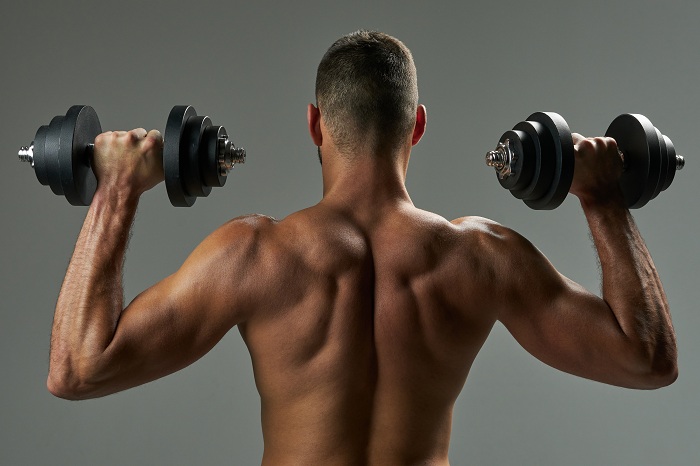
Rhomboid
Another of the back muscles that is named after its shape, the rhomboids actually comprise two separate muscles on either side of the back: the rhomboid major and rhomboid minor.
They sit on the upper back just under the traps, and play a big role in posture as they are used to pull the shoulder blades together.
Teres Major
The teres major muscle is a small but thick muscle that attaches to both the scapula and the humerus.
Sometimes known as the ‘lat’s little helper’, the teres major is one of four rotator cuff muscles, and is tasked with internally rotating the arm and rotating the shoulder joint.
Erector Spinae
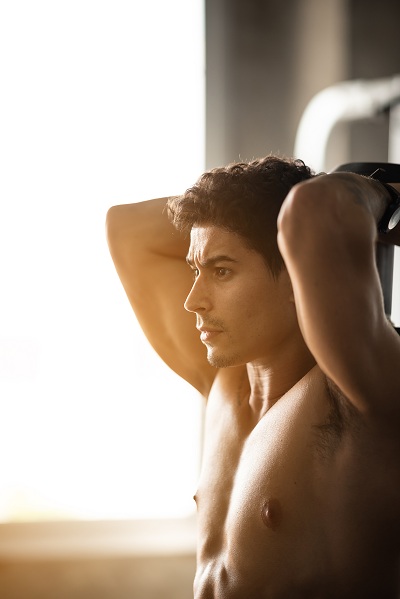
Perhaps less talked about than other muscles in the back, the erector spinae are a group of long muscles that originate in the pelvic region and extend vertically up the entire back to the base of the skull.
They are key for good posture, as this is the group of muscles that enables you to stand upright, as well as rotate your torso.
Infraspinatus
Finally, we come to the infraspinatus. This is a thick triangular muscle that sits on either side of the back at the shoulder joint.
Like the teres major muscle, it is one of the four rotator cuff muscles and is crucial in shoulder motion and stability.
Building Strength vs. Hypertrophy
More often than not, when we exercise the back with weights or our own body weight, we are trying to do one of two things – either build strength or create hypertrophy (building muscle).
Yes, there is a difference.
Training for strength is done with the aim of making the muscle stronger by gradually being able to lift more weight over time. Training for hypertrophy is performed to make the muscle larger, but not necessarily stronger.
There is a bit of crossover between the two. For example, if you become stronger over time by lifting heavier weights, your muscles are likely to grow. Yet, it may not be your prime focus.
With those two defined, how do you know what you are working during your gym sessions? There is no golden rule, although you can usually turn to the rep range to understand more.
Training in the 1 to 5 rep range is usually seen as training for strength, providing that the intensity is high enough. In other words, you should be working very hard to get through your sets of 1 to 5 reps, and will need longer to rest in between sets.
By reducing the weight and adding more reps – around 6 to 15 – you are training for hypertrophy. Rest times for hypertrophy are usually much shorter than when you train for strength.
What Are 3 Exercises That Strengthen Your Back
If you can strengthen the muscles in your back, you can drastically decrease your risk of injury through sport, activity and daily life.
With this in mind, here are three back exercises that can help you strengthen your back. Be sure to use the correct form to avoid injury. Always warm up properly, start with a light weight and, if in doubt, consult a personal trainer.
#1 – Barbell Deadlift
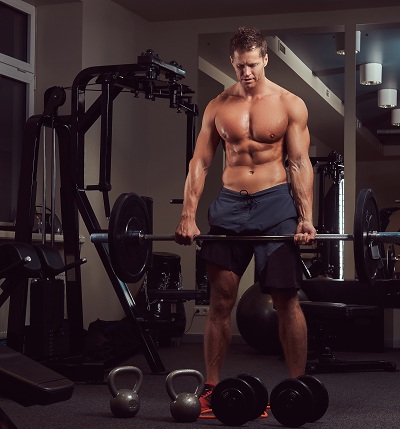
Whatever your age or goals, the barbell deadlift is seen as the king of back exercises and allows you to build huge strength in your back.
By some it is seen as a leg exercise but, in reality, it works the entire posterior chain.
It can build strength in the lower back and erector spinae muscles, although the muscles higher up the back will also benefit.
Be aware that the deadlift can feel like a complex movement, so you may want to check your form with a personal trainer or coach.
However, this guide will give you the basics, allowing you to try it in your own time.
How to perform:
- With the barbell on the floor, stand just behind the bar with your feet placed hip width apart.
- Hinge at hips and slowly bend your knees as you reach for the barbell. Keep your arms straight, your back straight, and your chest up.
- Take hold of the bar with the overhand grip (both palms facing your body) and around shoulder width apart. There are multiple grip methods, but the overhand grip is suitable for most people, especially beginners.
- Begin the movement by pushing through your feet to a standing position, lifting the bar straight up as you do so. Be careful to keep your back straight throughout the movement.
- Squeeze your glutes together at the top, but don’t overextend.
- Reverse the motion and lower the barbell to the ground. At the bottom, allow the weight to come to a dead stop. This is one rep.
#2 – Good Morning
No, we aren’t just being polite. Performing a good morning is an excellent part of any back workout and a great way to strengthen your lower back.
It is named after the bowing motion somebody may perform when saying hello. As it is an advanced exercise, it is worth ensuring you nail your form first, before you add weight.

How to perform:
- Start with your feet shoulder width apart and a barbell positioned across your shoulders. Your back should remain straight throughout the entire movement.
- Soften your knees (but don’t bend them), then hinge at the hips and lower your upper body towards the ground. Your body should be at around 90 degrees, with your torso parallel to the floor.
- Begin your return to vertical by pushing through your feet and returning your body upright. Remember to keep your back straight. As you reach the top, you will have completed one rep.
#3 – Wide Grip Pullup
The wide grip pullup is one of the greatest exercises for strengthening the muscles in your back – although it also proves to be one of the hardest to perform, especially for beginners.
This is because you are tasked with pulling your entire body weight with the strength of your upper back and arms. If you haven’t yet built strength in these muscles, it can feel like an impossible task.
However, there are ways to make pull ups easier to perform, allowing you to build strength before you perform regular pull ups.
Adaptations include using an assisted pull up machine (found in many commercial gyms) or by using a resistance band to assist your ascent. You can also opt to use the lat pulldown machine instead, as this offers you the chance to gradually increase the weight you lift.

You can find many instructions for these pull up adaptations online and by asking the PT at your gym.
How to perform:
- Stand below a pull up bar. This may need to be on a box or bench to be able to reach the bar.
- Grab the bar with your hands facing away from your body, slightly wider than shoulder width apart. If your hands face towards you, this is a chin up – this targets your biceps more than your back.
- Allow your feet to hang freely as you grasp the bar. This is the starting position.
- From this position, pull your shoulder blades down and then start pulling yourself up so your head reaches above the bar.
- Under control, lower yourself until you are back in the hanging position. This is one rep.
What Are the 4 Best Back Exercises for Muscle?
Building strength is a very sensible goal, especially for beginners and those wanting to prevent injury.

While training for strength will often result in some muscle growth, after you have built a certain level of strength, you may want to shift your focus towards building a bit more muscle. This is when hypertrophy training (see above) comes into play.
The three exercises we have mentioned in our strength section – deadlift, good morning, and wide grip pullup – will all build muscle if performed in the hypertrophy rep range, so we can take these as given.
What about other exercises to put beef on your back? Let’s explore our top four:
#1 – Barbell Row
If you want to put some muscle on your back, be sure to add the barbell row to your arsenal! Also known as the bent over row, this big-muscle move is a favourite of bodybuilders, athletes and PTs around the world.
This movement is a classic back builder as it allows you to go as heavy as you like – much heavier than dumbbells. However, beginners should start with the bar on its own to nail correct form before moving onto a heavier weight.
How to perform:
- Set up correctly, with your hands shoulder width apart and your palms facing away from you as you grab the bar. There are multiple grip variations – including the overhand grip – but this reverse grip will shift more of the focus onto your lats and lower traps.
- With your knees slightly bent, bend over at the hips so that you are around 90 degrees and your torso is parallel to the floor.
- In this position, row the bar straight up towards your torso – think about getting your elbows behind your body.
- At the top, pause and squeeze your shoulder blades together hard, then slowly return the barbell towards the ground. This is one rep.
- Aim for a slow and controlled movement to get the most from this exercise. If the bar is moving too fast, you have gone too light or heavy.
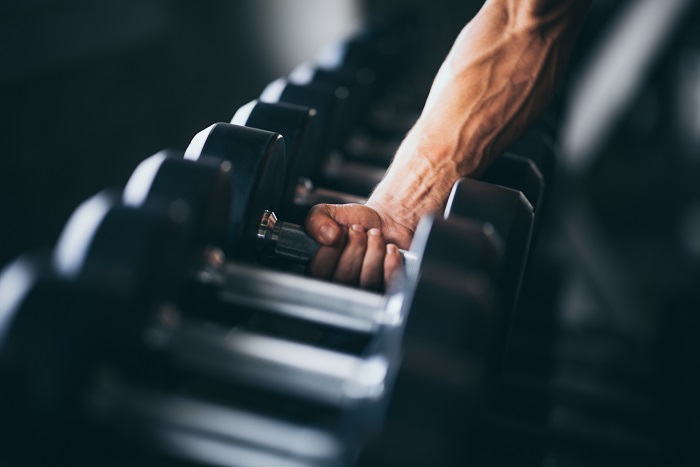
#2 – Single Arm Dumbbell Row
The single arm dumbbell row is another gym staple and an excellent back workout for any level of lifter. While similar to its barbell sibling, it has a few advantages. For one, it requires less equipment, plus it offers a better range of motion.
All you need is one dumbbell that will allow you to get to no more than 15 reps, and a bench or box to place a knee on. Then you can dumbbell row to your heart’s content!
The single arm row targets pretty much every muscle in the back, from the lats to the upper traps.
How to perform:
- Start by standing with your feet hip width apart, then place one leg onto a padded box or bench so that it is supported in a kneeling position.
- Keeping your torso straight, lean over slightly and support your body with your free hand (i.e., the one not holding the dumbbell). You are now in the starting position.
- Pull your shoulder blade back and then row the weight up. As a cue, think of getting your elbow behind your body.
- As with the bent over row, aim to pause and squeeze at the top, then return the dumbbell towards the ground. This is one rep of the single arm row.
- After a set with one arm, do the same repetitions for the other side of your body.

#3 – Seated Cable Row
Many bodybuilding enthusiasts will say that back workouts are not complete without this movement – and they have a point.
The seated cable row is a solid movement for stimulating muscle growth in many areas of the back; mainly the middle back. It is performed on a dedicated machine, although it may also be part of a multi-gym.
Note that this machine may not be available in every gym. If you don’t have access, you can quite easily adapt a cable machine to be able to perform this movement.
How to perform:
- Sit on the padded bench, extend your legs to the support pads (if needed), then grab hold of the bar or triangle handle. You should have your arms straight out in front of you at this point.
- Keep your spine straight and angled slightly forward throughout the movement. Start the movement by rowing backwards with the arms, so that your elbows travel behind your body.
- At the top position, with your elbows behind your body, be sure to pause and squeeze the shoulder blades together.
- Under control, gradually allow your arms to straighten again and return to the starting position. This is one rep.
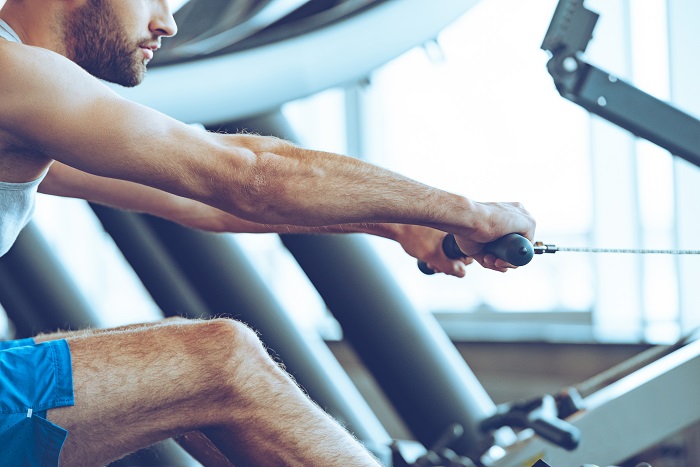
#4 – Inverted Row
Perhaps this one is a bit of a wildcard, but the inverted row is an excellent addition to any back workout where muscle building is the aim.
Due to its ability to be adapted, it is perfect for people who cannot do pull ups or chin ups. But don’t be fooled – the inverted row is still capable of torturing your back (in a good way!).
How to perform:
- In a power cage or Smith machine, set a bar at around waist height.
- Grab the bar with an overhand grip, with your hands wider than shoulder width. With arms extended, you should be hanging down with your feet supporting your body.
- Keep your body straight, then pull yourself up so your chest touches the bar.
- Under control, slowly lower yourself back to the position you started. This is one rep.
- Note that you can make the movement easier or more difficult by moving the position of your feet.
FAQ
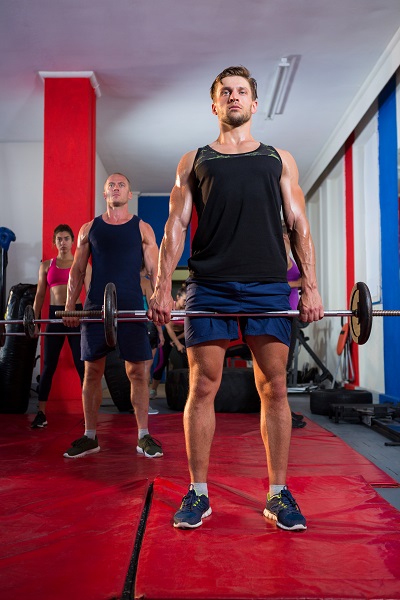
What is the Number One Back Exercise?
Bent over row? Pull ups? Single arm dumbbell row? Chest supported dumbbell row?
No, while there are some fine back exercises, we believe that the barbell deadlift is the number one back exercise for building strength and muscle, as well as preventing injury.
Entire books have been written on deadlifting, and if you want to make progress with your back health, we sincerely suggest learning how to deadlift.
Check out our brief guide to deadlifts in the section above to get you started.
What Exercises Prevent Back Injury?
To prevent back injury, you will want to strengthen your back in general. With strong and mobile muscles, you are less likely to injure yourself doing daily tasks.
There are loads of exercises you can add to your back workout to prevent injury. As mentioned above, the deadlift is very useful for strengthening the entire back, while a lower back extension is also great.
You can also perform simple body weight movements, such as the Superman or glute bridges, which will all help keep your back strong and mobile with no equipment needed.
What Back Exercises Can I Do at Home?
While you may not have a barbell, cable machine, or chin up bar, you can still perform a back workout in the comfort of your own home.
For example, having access to a single kettlebell or dumbbell will allow you to perform kettlebell swings or a single arm dumbbell row. If you don’t have access to even this basic equipment, you can grab some cheap resistance bands and try face pulls or the reverse fly.
Even with no equipment you can still do some sort of back workout at home. For example, the Superman challenges your back to work simply by engaging your core and lifting your arms and legs off the ground. No equipment, no fuss!
Conclusion
If you have read this far, then you will now know the importance of never skipping a back workout again!
Your back is crucial to pretty much every movement in your body and having a healthy back will allow you to perform those movements with more grace and ease whatever your age.
We hope this article has given you inspiration ahead of your next back workout and will keep your back strong, healthy and injury-free for decades to come. Good luck!

